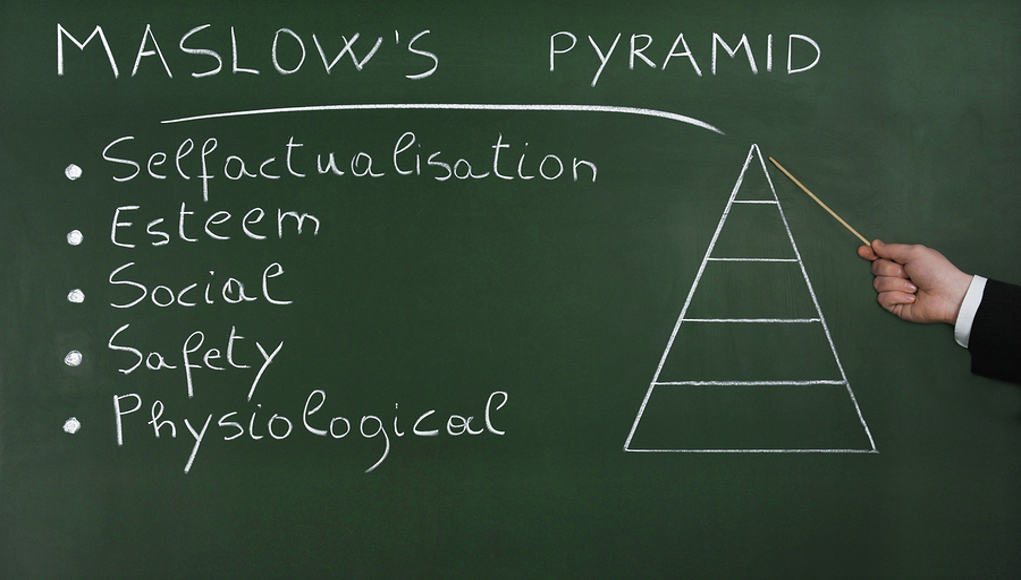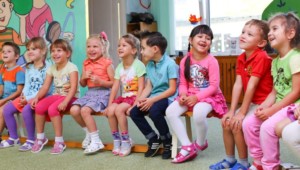Why Every 10-Year-Old Should Know Maslow’s Hierarchy

By Alice Pendlebury
My fifth-grade classroom this year is full of perfectionists. Getting students to raise their hands unless they are 100% sure of the answer is a daily battle, and they hate hearing that they’ve done something wrong.
As you might imagine, it was a bit of a shock to the system when I returned our first math test of the year and not every student received a perfect score: there was some frustration, and there were even some tears, despite my reassurances that this test reflected only a tiny part of their academic achievement and was not a reflection on who they were or how hard they had tried.
When I gave back the second test, no one cried—not even the students who had struggled the most. It wasn’t because every student suddenly became perfect at math, although that would have been wonderful! It was because we spent time focusing on our needs as learners before worrying too much about test scores, and that’s helped create a classroom where everyone—myself included—has begun to feel safe making mistakes.
Introducing the Hierarchy of Needs
So what do we need in order to be ready to learn? Even though most students usually don’t encounter Abraham Maslow’s Hierarchy of Needs until high school or even college, I decided to introduce it to my fifth graders in order to answer that question. We talked about the different levels and what they meant, and how according to Dr. Maslow we have to fulfill our needs in a specific order, taking care of the basics first. Once those are satisfied, we can focus on other important needs—like relationships with family and friends, or the pursuit of knowledge.
To tie this into learning, we discussed the fact that most (although unfortunately not all) of the time, they come to school well rested and fed and clothed appropriately. Once those needs are taken care of, we can move on to feeling emotionally safe in our environment.
To help with that, I showed my students ClassDojo’s videos on empathy, which helped them understand why caring about the feelings of others matter. After the election in particular, we had to take some time to reestablish those feelings of safety inside the classroom and reiterate how important it is to accept each other as we are, embrace our differences, and deal with those differences with friendship rather than fear.
Empathy isn’t something we only practice at specific moments, though. It’s something we actively focus on throughout the week. For instance, my students take time every day to write shout outs to each other: little sticky notes with positive messages of appreciation that get posted on a cabinet door. We then read these aloud on Friday mornings along with discussions on our struggles and successes from that week. Talking about those things in a supportive group often reminds students that they are not alone in a lot of the challenges they face. What better way to feel safe and like part of a community?
Learning That Mistakes Are Okay
All of this helped my students know that they are loved and belong in my classroom—the “basic needs”–which brings us up the pyramid where we can really work on developing a growth mindset. To introduce this concept, I used another video series from ClassDojo on Growth Mindset, and I spoke to my students about how it was okay to fail, even in front of others.
I realized that in order to feel comfortable with the notion of failure, I would need to make sure the “basic needs” of all my students were met first, which meant showing them that I can also fail, and that it’s okay. I’m currently studying for a PhD, so I showed them mistakes I had been making on my school work, and they understood that the growth mindset is for adults too. The more comfortable they felt with their peers and with me, the more willing they were to try new things. But just telling my students that making mistakes is okay was not enough.
As a class, we discussed how we go through the stages of the hierarchy multiple times throughout the day or week, and that overall we are also moving through the stages as we grow up and as is developmentally appropriate. Developmentally, right now, they care very deeply about what others think of them, and soon they will care more about what their peers think than their teachers or parents—and that is okay. Understanding that this journey to having a growth mindset is exactly that—a journey—also means ensuring none of them feel like they are failing when they do have a negative reaction to making a mistake. Developing a growth mindset, like any other habit, takes work!
At the end of this year, my fifth graders will move on to middle school—a whole new environment where they’re no longer the biggest fish in the pond. But the most important thing they bring along from our year together won’t be any of the facts and figures. They will bring the understanding that it’s okay to be challenged—and that if you’re part of a community of empathy and support, and you know how to help create that community, there’s no limit to what you can learn.
For more, see:
- Superhero Mindset Man Sparks Enthusiasm for Growth Mindset
- Actionable Steps to Bring Growth Mindset into the Classroom
- Four Ways to Promote Growth Mindset in Project-Based Learning
Alice Pendlebury is a fifth-grade teacher at a Title I school in Northern Colorado.
Stay in-the-know with all things EdTech and innovations in learning by signing up to receive the weekly Smart Update.




Amy
Love everything about this! You are truly teaching them the most important lessons for now and their lives!